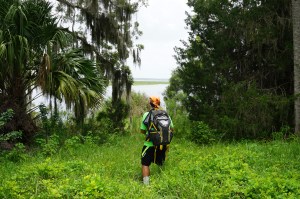
I did some exploring and hiking at Econfina Creek Wildlife Management Area which is in Washington County in northern Florida. This area of the state to me still has that “old Florida” feel to it and there is a lot of wilderness areas to experience and naturally with that I wanted to see what history I could discover along the way.
Well one of the areas I found was an old cemetery dating back to the 1800’s called Gainer Cemetery. The cemetery is in decent condition though some of the tombstones are damaged, overall it is a very peaceful and beautiful place in the woods there. I found it off a forest road and learned that there was a homestead nearby at one time as well. It belonged to the Gainer family who had settled here back in those days. There is a fence around the cemetery and it seems to be kept up from time to time. There were some newer tombstones as well which suggests it is still an active cemetery most likely used by descendants of the Gainer family. I truly enjoyed visiting the site and it inspired me to learn as much history as possible on the area.
Here is some interesting history on the area “William Gainer, a surveyor and mathematician, came to the Econfina area in 1824 or 1825 and established his homestead and a large ranch on the west side of Econfina Creek. Gainer had served as a scout and surveyor in the U.S. Army during Andrew Jackson’s 1818 invasion of Florida. It was during his time of service in the U.S. Army in West Florida that Gainer surveyed the Econfina area and determined that he would eventually bring his family back to the area to settle. The Gainer homestead reportedly served as a church and school until both were established within the Econfina community south of the Gainer home place. The Gainer place also served as the area “post office” until the U.S. post office was established in Econfina in 1855. William Gainer patented several tracts of land in the Econfina area beginning in 1837 and is reported to have lived at or near the original Gainer homestead until his death at age 84, in 1870. William Gainer’s son, Thomas Henry, also died in 1870, possibly from long-term complications resulting from wounds received during his service in the Confederate army at the battle of Jonesboro, Georgia, in 1864. The homestead was abandoned soon thereafter. The Gainer Family Cemetery is where William Gainer (1786-1870); his first wife Jane Watts Gainer (1792-1837); his sons William Augustus Gainer (1824-1912), Thomas H. Gainer (1834-1870), and Walter R. Gainer (1836-1920); and Eugenia O. Gainer (1848-1941) were laid to rest.”
My Video
Gainer Cemetery in Washington County
Resources
Econfina Wildlife Management Area










































